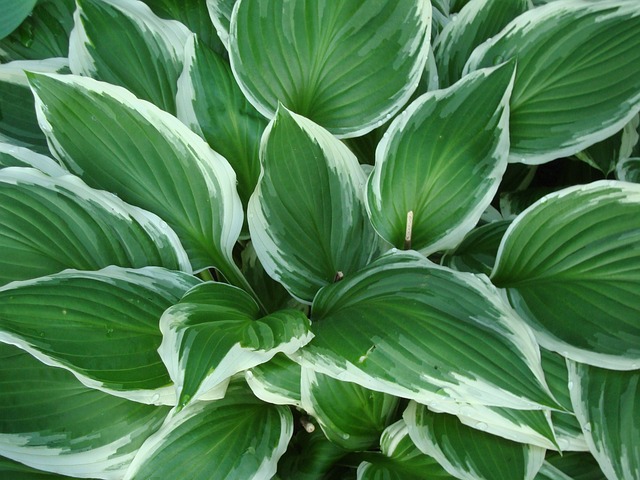Introduction to Hostas
Embark on a journey of shade gardening with our Hosta garden guide. Hostas, known for their lush foliage and shade tolerance, are a favorite among gardeners looking to add texture and color to their shaded garden spaces. This guide will provide you with the essentials for growing and caring for these versatile perennials.
Botanical Overview
Understanding Hosta’s Botanical Roots
- Common Name: Hosta
- Scientific Name: Hosta spp.
- Family: Asparagaceae Hostas, originating from Asia, are herbaceous perennials renowned for their wide variety of foliage sizes, shapes, and colors. They are a staple in shade gardens due to their easy care and attractive leaves.
Varieties of Hosta
A World of Choices within Hosta Varieties Hostas, celebrated for their diverse and striking foliage, offer a rich selection of varieties, each with its own unique charm. From the delicate, small-leaved varieties perfect for subtle garden accents to the grand, bold-leafed types that command attention, the Hosta family presents a wide array of choices for gardeners. Some varieties boast vibrant green hues, while others surprise with blue, yellow, or variegated leaves.
Popular varieties like ‘Halcyon’ with its stunning blue leaves, ‘Sum and Substance’ known for its large chartreuse foliage, and ‘Patriot’ with striking white-edged leaves, provide an array of options for garden compositions. The sheer diversity of Hostas allows for creative expressions in shade gardens, enabling gardeners to play with texture, color, and form. Whether you’re looking to create a serene green oasis or a tapestry of foliage colors, the variety of Hostas ensures there’s a perfect plant for every shaded corner of your garden.
- Hosta ‘Halcyon’: Known for its blue leaves and tolerance to sun.
- Hosta ‘Sum and Substance’: Features large, chartreuse leaves.
- Hosta ‘Patriot’: Distinguished by its green leaves with white margins.
- Hosta ‘Empress Wu’: Famous for being one of the largest Hostas, with deep green leaves. Each variety offers a unique aesthetic, allowing gardeners to create diverse and textured shade gardens.
Planting and Growth Conditions
Optimal Conditions for Hosta Growth
- Sunlight: Thrive in partial to full shade; some varieties can tolerate more sun.
- Soil: Prefer moist, well-draining soil rich in organic matter.
- Planting Tips: Plant in spring or fall; ensure sufficient space for growth. Proper location and soil preparation are key to the health and beauty of Hostas.
Growing Zones for Hostas
Hostas are incredibly versatile plants that thrive across a wide range of climates, making them suitable for many gardeners. They are hardy in USDA Hardiness Zones 3 through 9, which covers a vast geographic area with varying climates. In these zones, Hostas can withstand the winter cold and return year after year. In the colder zones, such as 3 and 4, Hostas go dormant in winter and reemerge in spring. In the warmer end of their range, like zones 8 and 9, they enjoy milder winters but may require more shade and water during hot summers to prevent leaf scorch. It’s important to choose a variety that matches your specific zone’s conditions, especially considering factors like humidity and summer heat. For optimal growth, planting Hostas in an area that replicates their natural woodland habitat – cool, moist, and shaded – will yield the best results, regardless of the zone. Gardeners should also consider the microclimate of their garden, as areas close to buildings or under tree canopies might offer more suitable conditions for these shade-loving plants.
Care and Maintenance
Keeping Your Hostas Healthy
- Watering: Regular watering is crucial, especially during dry spells.
- Fertilizing: Apply a balanced, slow-release fertilizer in the spring.
- Dividing: Divide Hostas every 3-5 years to maintain health and vigor. Regular care will keep your Hostas lush and vibrant throughout the growing season.
Benefits and Uses
The Versatility of Hostas in the Garden
- Aesthetic Appeal: Their varied foliage adds beauty and texture to shaded areas.
- Easy to Grow: Hostas are low-maintenance, making them ideal for novice gardeners.
- Companion Planting: Pair well with other shade-loving plants like ferns and astilbes. Hostas not only beautify shaded areas but also provide a low-maintenance option for busy gardeners.
Potential Problems
Managing Common Hosta Challenges
- Pests: Slugs and snails are common pests; use organic or chemical controls as needed.
- Diseases: Watch for fungal diseases; ensure good air circulation and avoid wetting leaves.
- Environmental Factors: Protect from excessive sun and wind to prevent leaf scorch. Awareness and proactive care can prevent most problems and keep your Hostas thriving.
Conclusion
Hostas are an excellent choice for enhancing shaded garden areas. With their diverse foliage and easy care, they offer endless possibilities for creating serene and textured landscapes. Whether you’re new to gardening or a seasoned enthusiast, Hostas are a rewarding addition to any shade garden.












You must be logged in to post a comment.